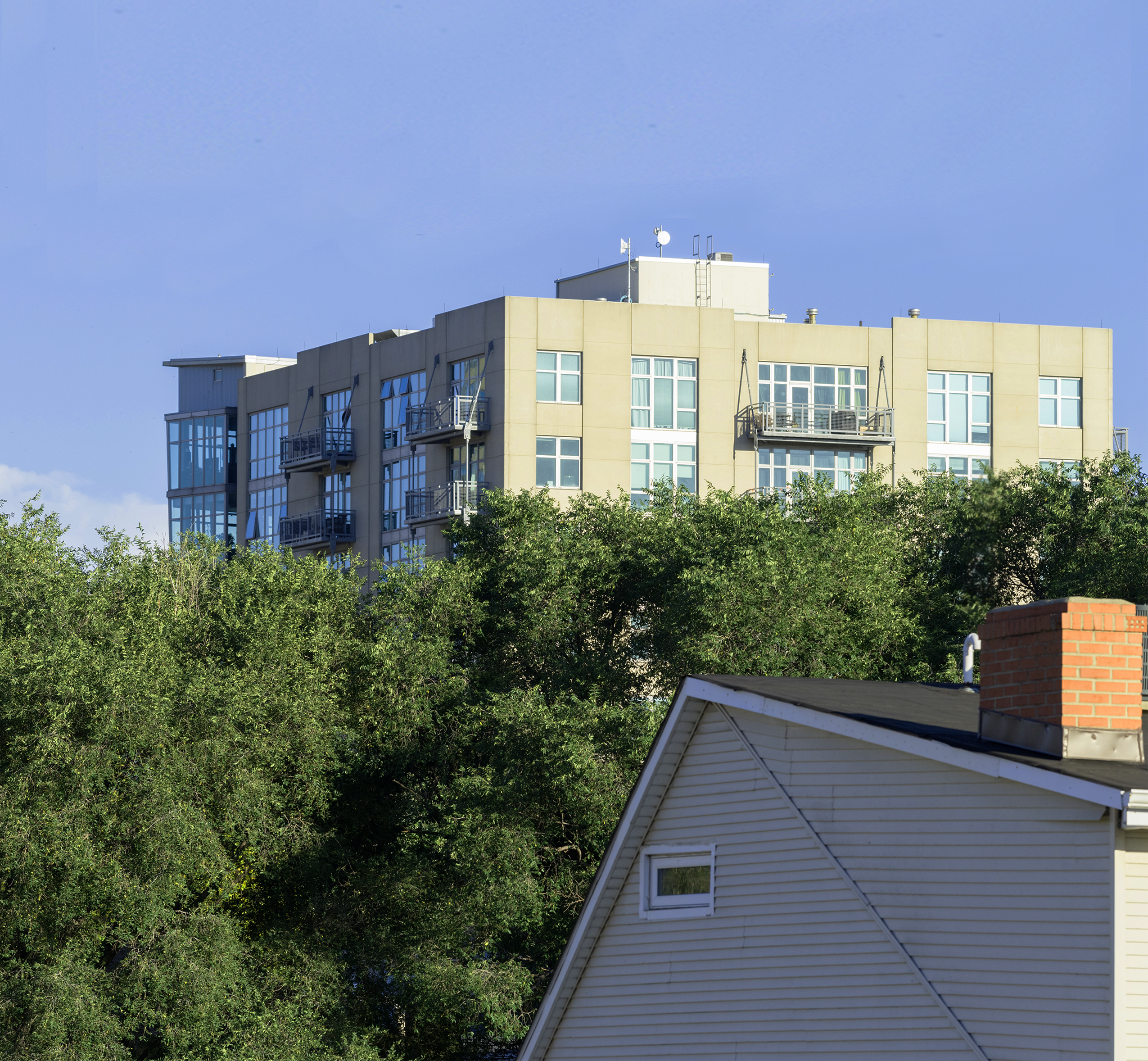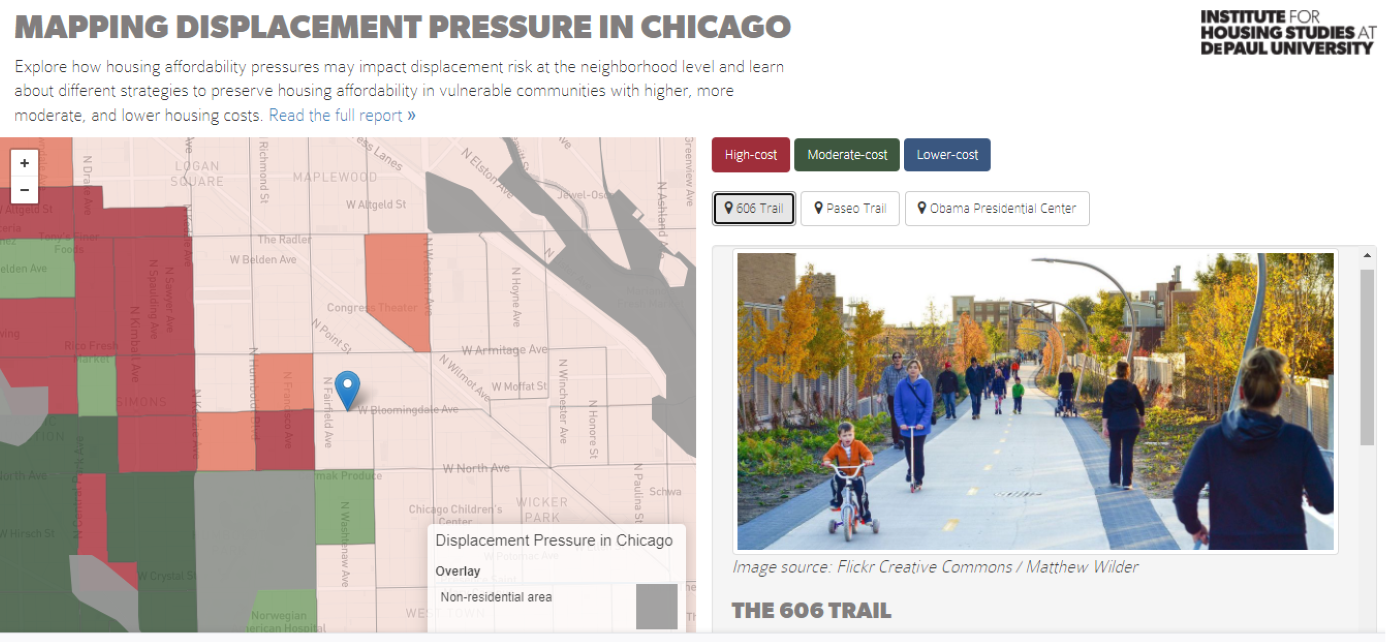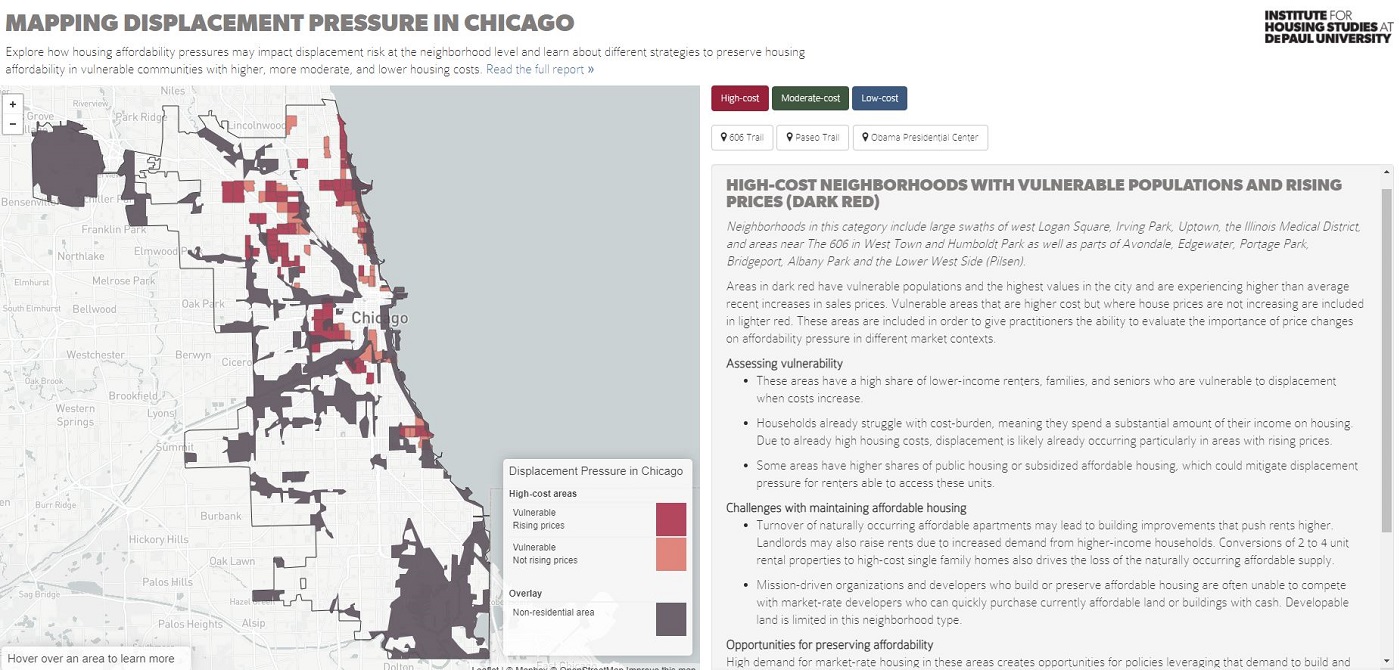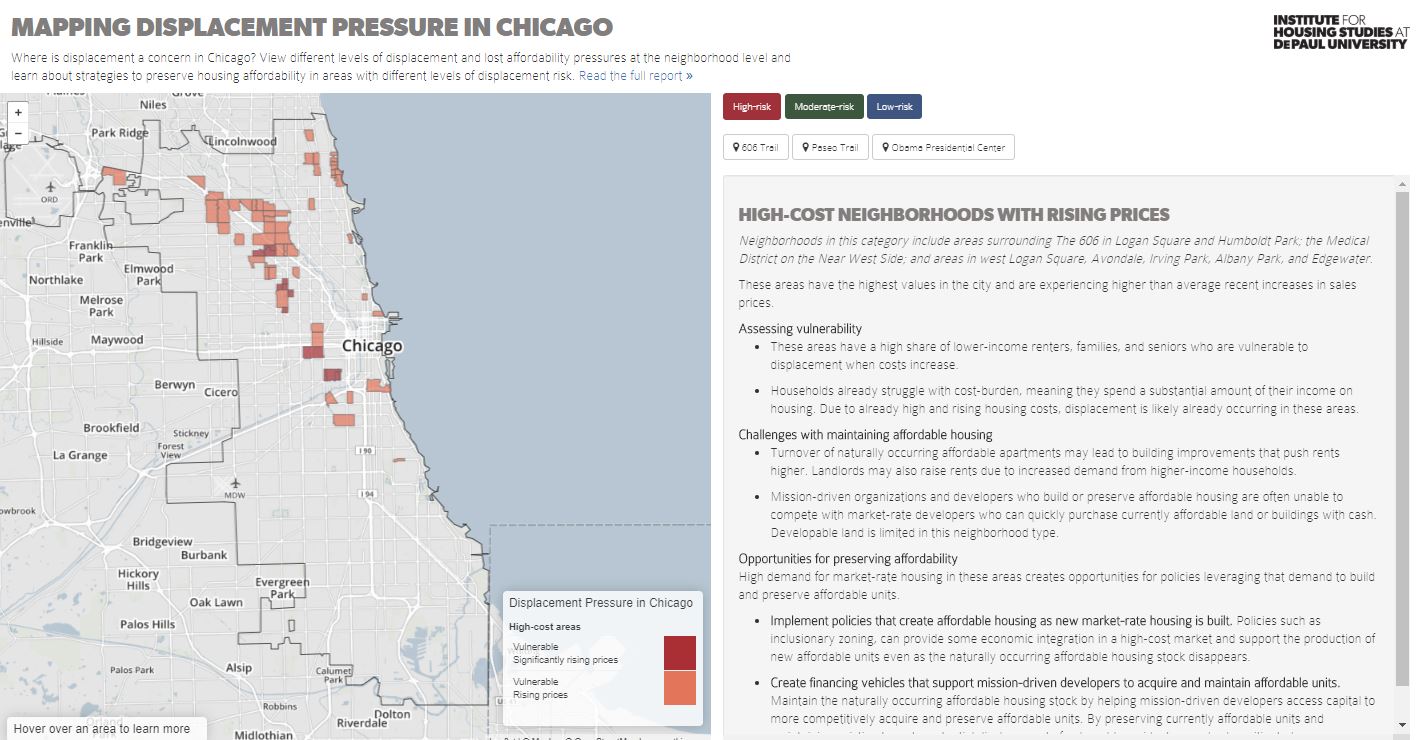Where in the City of Chicago are vulnerable residents likely undergoing significant displacement pressures? Where are house prices rising but costs are still too low to likely lead to displacement? Where do we need aggressive policy measures to preserve affordability and where else do community development stakeholders need to be vigilant amid planned investment?
In order to help support ongoing and future public investment decisions and guide practical and proactive responses to preserving housing affordability in surrounding neighborhoods, IHS developed an interactive tool that visualizes neighborhood-level displacement risk and housing affordability pressures across the City. The tool brings together housing market and demographic information needed to begin an evaluation of the potential displacement risk surrounding a proposed project and to help inform conversations about gentrification and displacement throughout the City.
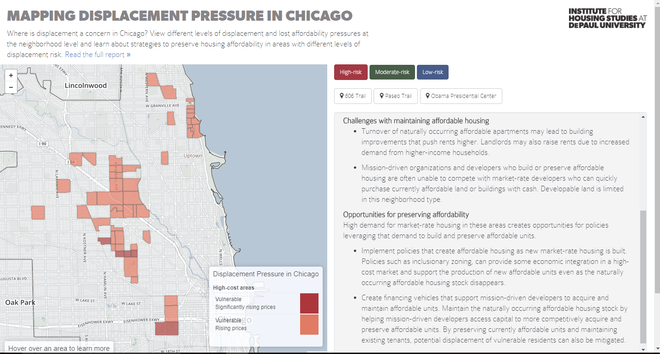 Mapping Displacement Pressure in Chicago tool
Mapping Displacement Pressure in Chicago tool
IHS's new mapping tool allows users to explore areas where 1) house prices recently appreciated at levels above the city average and where 2) a significant share of residents are vulnerable to displacement due to factors such as income, housing cost burden, and housing tenure type. It features the ability to examine market conditions associated with displacement risk surrounding current and planned projects, including The 606, The Paseo Trail, and the Obama Presidential Center as well as the ability to explore:
- High-cost areas in the City where gentrification is likely well underway
- Moderate-cost communities where displacement risk could be accelerated with certain projects or initiatives, especially if near transit, other existing amenities, or high-cost real estate markets
- Lower-cost areas that have seen recent market movement but still require significant investment and long-term strategies to rebuild housing demand before displacement due to rising costs becomes an issue
Each market type has different drivers of demand, different current conditions, and therefore different risks associated with displacement. For high-cost areas, displacement pressure is likely coming from higher-income households and investors targeting a higher-income market, while pressures in more affordable areas are likely due to investors seeking value in potentially rising markets. For lower-cost areas, rising prices may indicate a stabilizing market, but long-term disinvestment is likely still a central concern and driver of neighborhood change rather than gentrification.
By visualizing the intersection of current market conditions and underlying vulnerability to displacement, the Mapping Displacement Pressure in Chicago tool provides stakeholders with a data-informed starting point for developing neighborhood-level housing policy strategies that preserve affordability. For fact sheets summarizing trends and policy implications in high-cost, moderate-cost, and low-cost markets, click here. For more information on the data and methodology behind this analysis, click here.
About the Project
Concerns that existing residents will not benefit from the development of a new neighborhood amenity can quickly follow the announcement of a large-scale public investment project. A new amenity can increase demand for housing from higher-income households, leading to rising prices and conditions that can make housing unaffordable to current lower- or moderate-income residents.
The impact of a new public investment can vary based on the characteristics of surrounding neighborhoods, however. Local conditions matter, as does the vulnerability of the local population to displacement should house prices increase significantly. For example, IHS research found that the introduction of The 606 linear park system had no effect on house prices in high-income, high-cost, largely owner-occupied neighborhoods along the eastern half of the trail, but led to a substantial increase in prices in the lower-income, more affordable, high-renter neighborhoods surrounding the western half of the trail - - likely putting pressure on the residents already struggling to afford housing in their neighborhood.
Beyond these underlying housing market and demographic characteristics, there are other location and environmental factors that may influence displacement risk. For example, neighborhoods near the western half of The 606 have other characteristics such as proximity to transit and higher-value markets that likely amplify its appeal to investors and higher-income households. Conversely, evidence also suggests that neighborhood conditions such as high crime, lack of existing amenities, or isolation from strong real estate markets can discourage private investment and potentially mitigate short-term displacement pressures associated with a public investment like The 606.
In order to help understand displacement risk in a neighborhood context, IHS will be updating the Mapping Displacement Pressure in Chicago tool annually and working with community organizations and stakeholders throughout the year to apply this work to specific initiatives and neighborhoods. Future IHS research will build on this analysis to better understand how investment patterns, affordability, and displacement risk are impacted by housing market and socioeconomic conditions like vacant land, housing stock characteristics, proximity to amenities, and crime. IHS will also explore how a lens of displacement risk can inform other place-based community development strategies around topics such as equitable development, public health, and infrastructure investment.
About the Analysis
Recently, a growing number of studies have focused on ways to analyze data associated with lost affordability and displacement risk to help policymakers be more proactive in planning for preserving affordable housing and preventing displacement. While these analyses are not predictive, they represent a critical starting point for practitioners and policymakers to assess conditions and needs at the neighborhood level. Building on IHS's work documenting changes to the housing market along The 606, IHS created the Mapping Displacement Pressure in Chicago tool to help facilitate proactive and data-informed conversations about displacement risk in the City of Chicago.
The foundation of the Mapping Displacement Pressure in Chicago tool is a demographic and socioeconomic segmentation analysis of the City of Chicago and a geospatial housing market analysis of current and changing conditions to identify areas where residents are vulnerable to displacement in a rising cost environment and where housing costs are rising. IHS worked with faculty and students from DePaul’s Department of Predictive Analytics to develop a clustering algorithm to identify communities with similar characteristics regardless of physical proximity. The model incorporated over 30 census tract-level data points on housing affordability, housing stock, and environmental factors, and resident demographics and socioeconomic indicators that are associated with displacement risk. These results were intersected with analysis that classified census tracts based on current house prices and a recent change in the price of housing in order to identify areas with rising costs where the underlying population is vulnerable to displacement.
For details on the data collected, project methodology, and a summary of the segmentation and housing market analysis results, click here. For a fact sheet summarizing trends and policy implications in high-cost, moderate-cost, and low-cost markets, click here. For more information on the project, or for custom technical assistance inquiries utilizing the tool, contact IHS.
